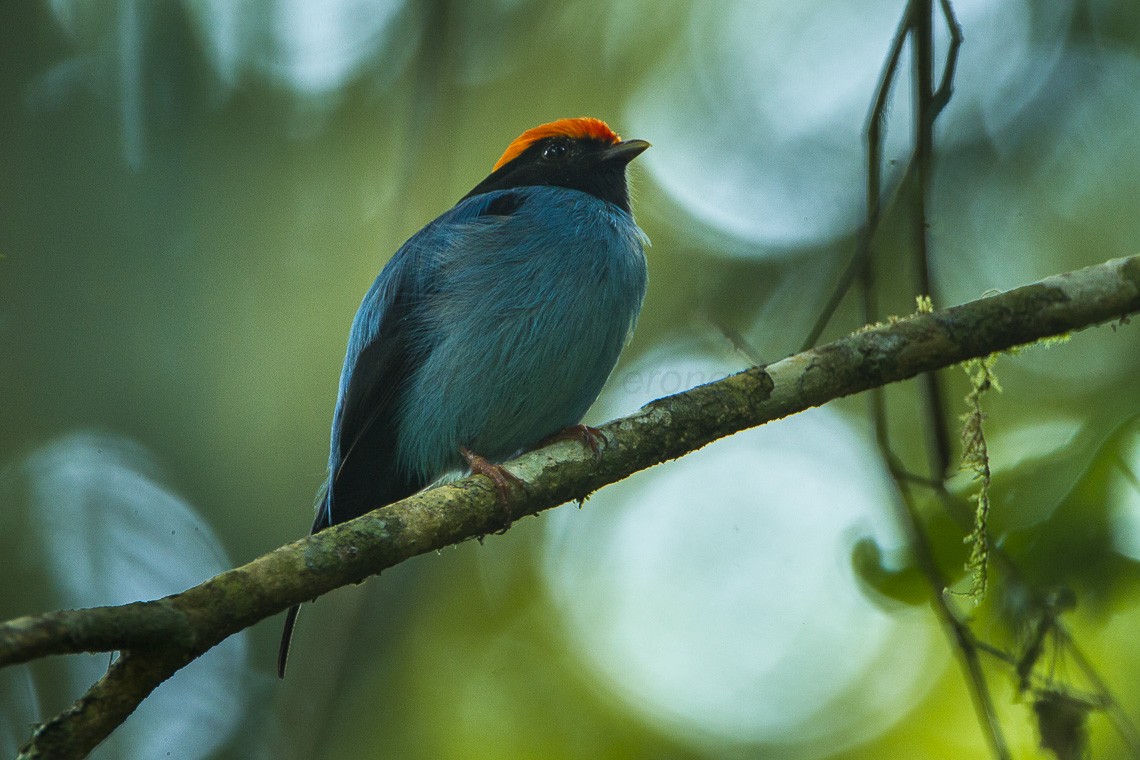Swallow-tailed Manakin
A species of Cooperative-displaying Manakins Scientific name : Chiroxiphia caudata Genus : Cooperative-displaying Manakins
Swallow-tailed Manakin, A species of Cooperative-displaying Manakins
Botanical name: Chiroxiphia caudata
Genus: Cooperative-displaying Manakins
Content
Description General Info
 Photo By Francesco Veronesi , used under CC-BY-SA-2.0 /Cropped and compressed from original
Photo By Francesco Veronesi , used under CC-BY-SA-2.0 /Cropped and compressed from original Description
Formerly, the name "swallow-tailed manakin" was used widely, but as it is misleading (the tail is unlike that of any swallow), this name has largely been abandoned for "superior blue manakin". As suggested by this common name, the male is - by far - the manakin with most blue to the plumage. The entire body is bright blue, while the wings, tail and head, except for the red cap, are black. The far duller female is greenish-brown overall. Both sexes have elongated central rectrices. Juvenile males resemble the adult female, but gradually develop first the red crown, then the black face-sides, and finally the remaining plumage of the adult male. The males form leks, typically consisting of a single adult and two sub-adult males, where they sing and "dance" to attract females. This was shown in the BBC's The Life of Birds documentary series. Due to the pronounced hypergamous nature of its females, up to 90% of male blue manakins never mate. 
Size
15 cm
Nest Placement
Tree
Feeding Habits
Swallow-tailed Manakin primarily consume small fruits and insects, often catching their prey in flight with an aerial sally or while perched. Their diet showcases a blend of foraging and hunting techniques uniquely adapted to their ecological niche.
Habitat
Swallow-tailed Manakin primarily inhabits subtropical or tropical moist lowland and montane forests. This species thrives in regions characterized by high humidity and dense woodland, with a preference for secondary growth and edge habitats. Their territories are typically found below 1500 meters, but they can be encountered up to 1900 meters in elevation. Within their range, they establish display arenas in clearings, using horizontal vines or branches about one meter above the ground to attract mates.
Dite type
Frugivorous
General Info
Feeding Habits
Bird food type

Fruit
Distribution Area
This bird is found in north-eastern Argentina, southern and south-eastern Brazil, and Paraguay. Its natural habitats are subtropical or tropical moist lowland forest, subtropical or tropical moist montane forest, and heavily degraded former forest. It is generally common in the appropriate habitats within its range. One to five males live within an area of 100 meters^2, consisting of one alpha male, one beta male, and a few gamma males. Each area has four to six display perches which are horizontal vines, branches, or lianas one meter off the ground. The main display arena is cleaned by the alpha and beta males by removing moss, leaves, or twigs from the perch, making it appear whiter. 
Species Status
Not globally threatened.